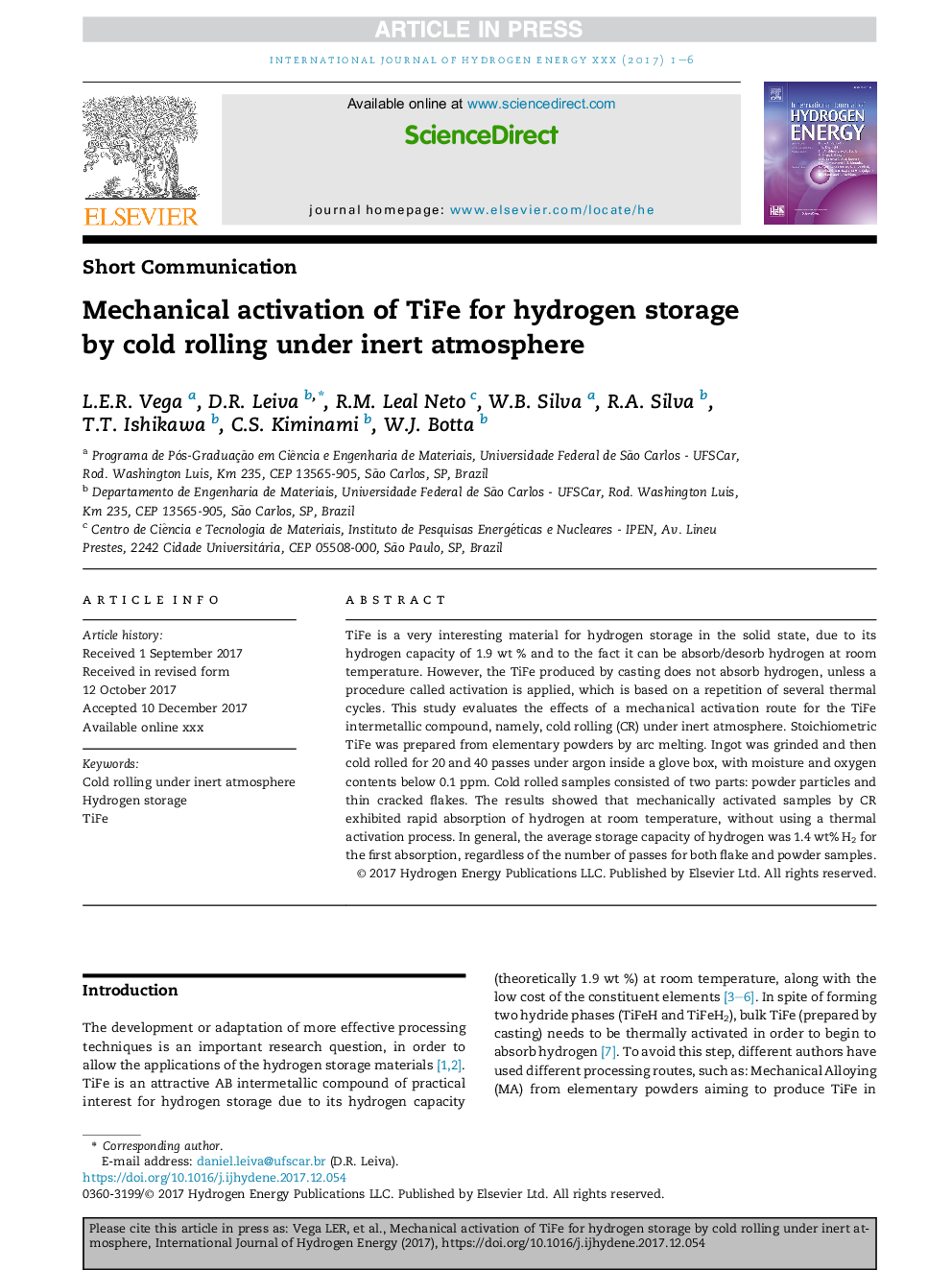| Article ID | Journal | Published Year | Pages | File Type |
|---|---|---|---|---|
| 7708073 | International Journal of Hydrogen Energy | 2018 | 6 Pages |
Abstract
TiFe is a very interesting material for hydrogen storage in the solid state, due to its hydrogen capacity of 1.9Â wt % and to the fact it can be absorb/desorb hydrogen at room temperature. However, the TiFe produced by casting does not absorb hydrogen, unless a procedure called activation is applied, which is based on a repetition of several thermal cycles. This study evaluates the effects of a mechanical activation route for the TiFe intermetallic compound, namely, cold rolling (CR) under inert atmosphere. Stoichiometric TiFe was prepared from elementary powders by arc melting. Ingot was grinded and then cold rolled for 20 and 40 passes under argon inside a glove box, with moisture and oxygen contents below 0.1Â ppm. Cold rolled samples consisted of two parts: powder particles and thin cracked flakes. The results showed that mechanically activated samples by CR exhibited rapid absorption of hydrogen at room temperature, without using a thermal activation process. In general, the average storage capacity of hydrogen was 1.4Â wt% H2 for the first absorption, regardless of the number of passes for both flake and powder samples.
Keywords
Related Topics
Physical Sciences and Engineering
Chemistry
Electrochemistry
Authors
L.E.R. Vega, D.R. Leiva, R.M. Leal Neto, W.B. Silva, R.A. Silva, T.T. Ishikawa, C.S. Kiminami, W.J. Botta,
